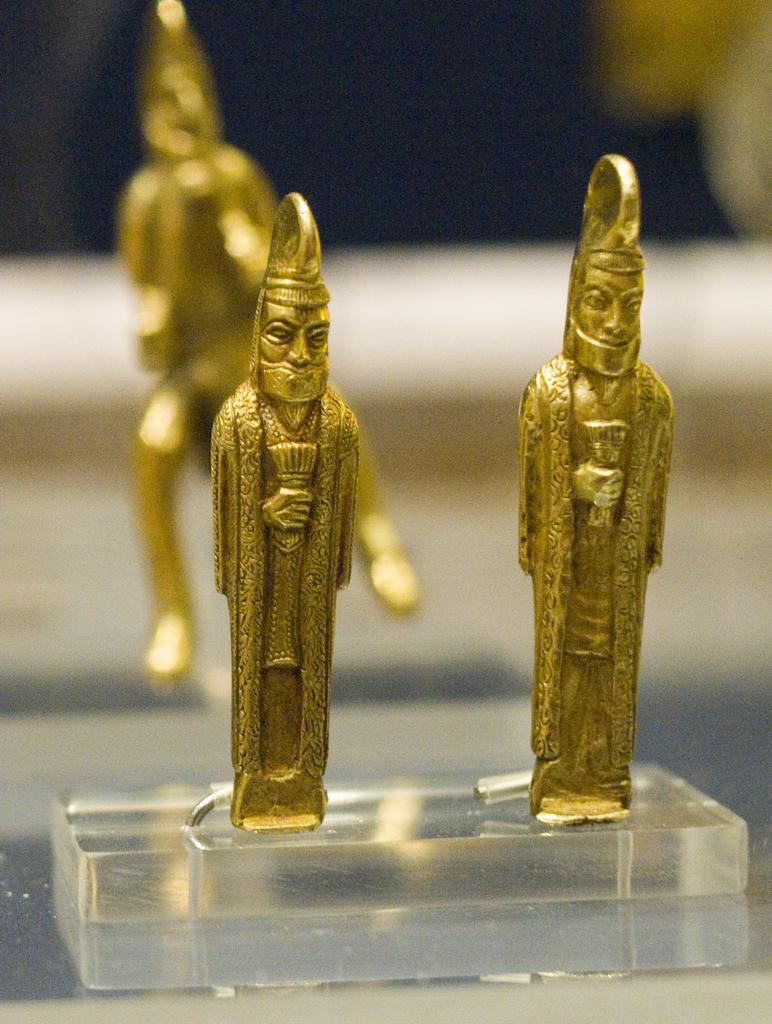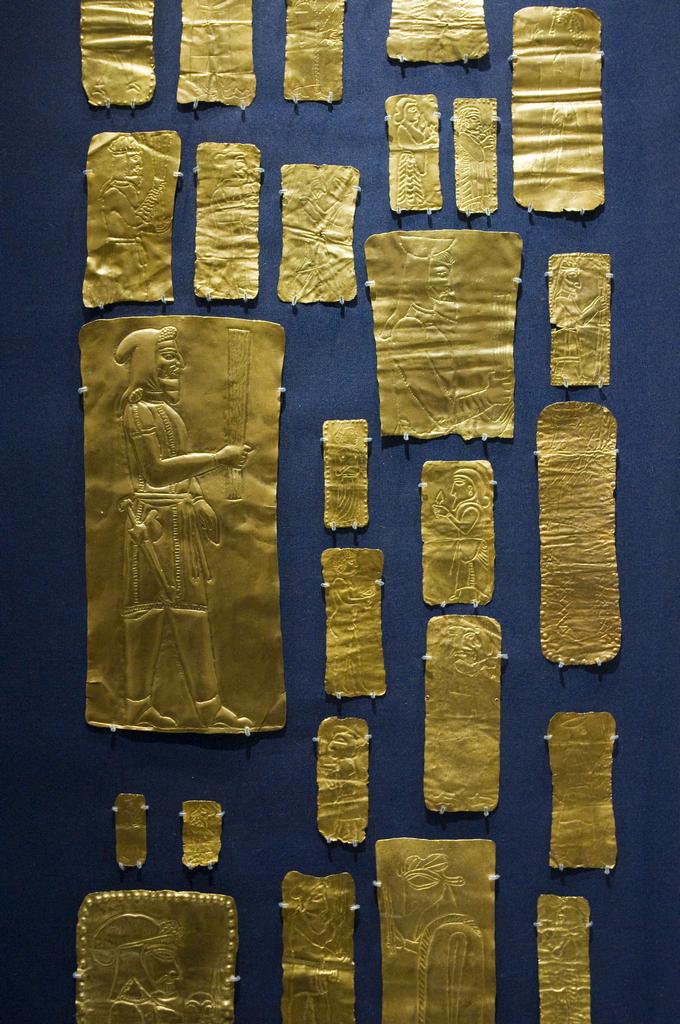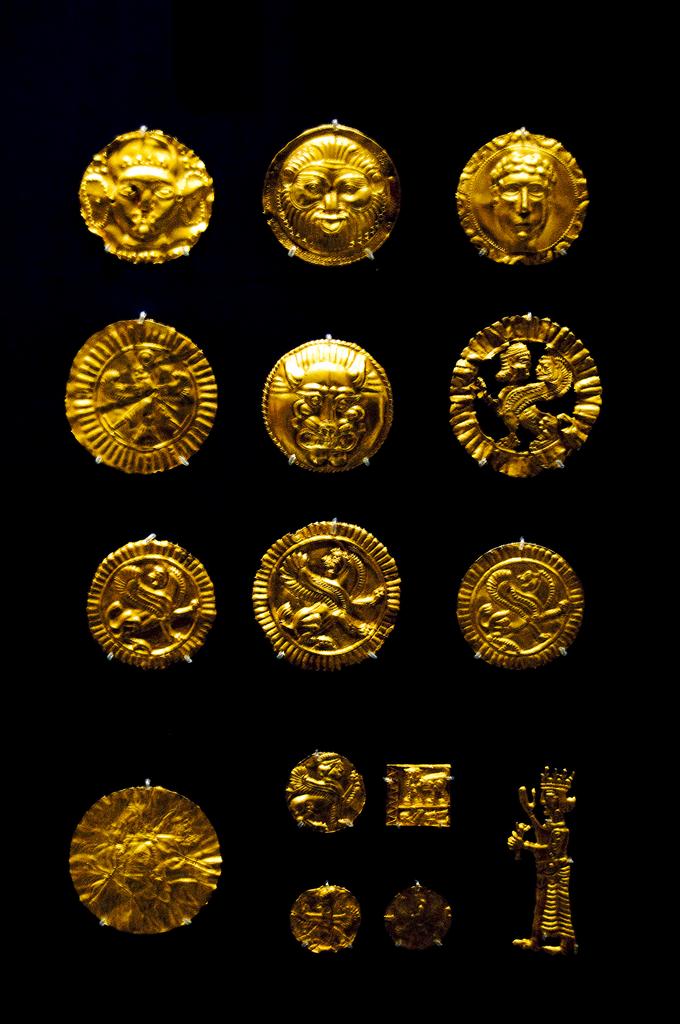Achaemenid Persian Art
Although the Persians drew upon artists, incorporating styles and techniques from various regions within their vast empire, their artistic output transcended mere amalgamation, resulting in the development of a distinct and innovative Persian style.
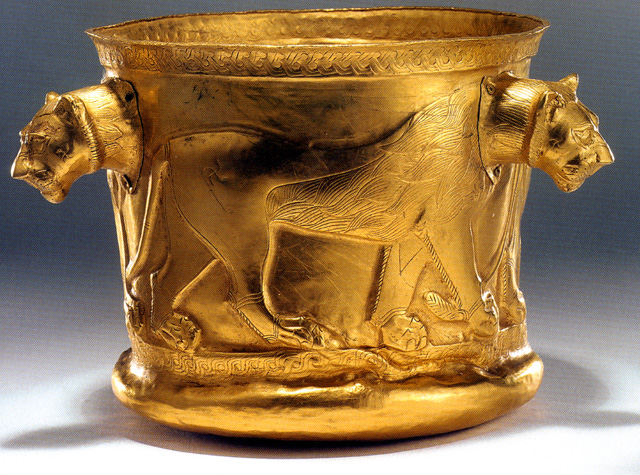
This synthesis of diverse influences gave rise to a new aesthetic characterized by its sophistication, intricacy, and symbolic richness. Persian art seamlessly blended elements from Mesopotamian, Egyptian, Greek, and Central Asian traditions, yet it emerged as a cohesive and unified expression of Persian identity and cultural excellence. From the magnificent reliefs of Persepolis to the exquisite metalwork of the Achaemenid period, Persian art exemplified a harmonious fusion of diverse artistic languages, reflecting the empire’s cosmopolitan ethos and imperial grandeur.
Colored Glaze Reliefs
The Achaemenids embraced the artistic tradition of colored glaze reliefs around 539-538 BC, following the conquest of Babylon by Cyrus the Great.
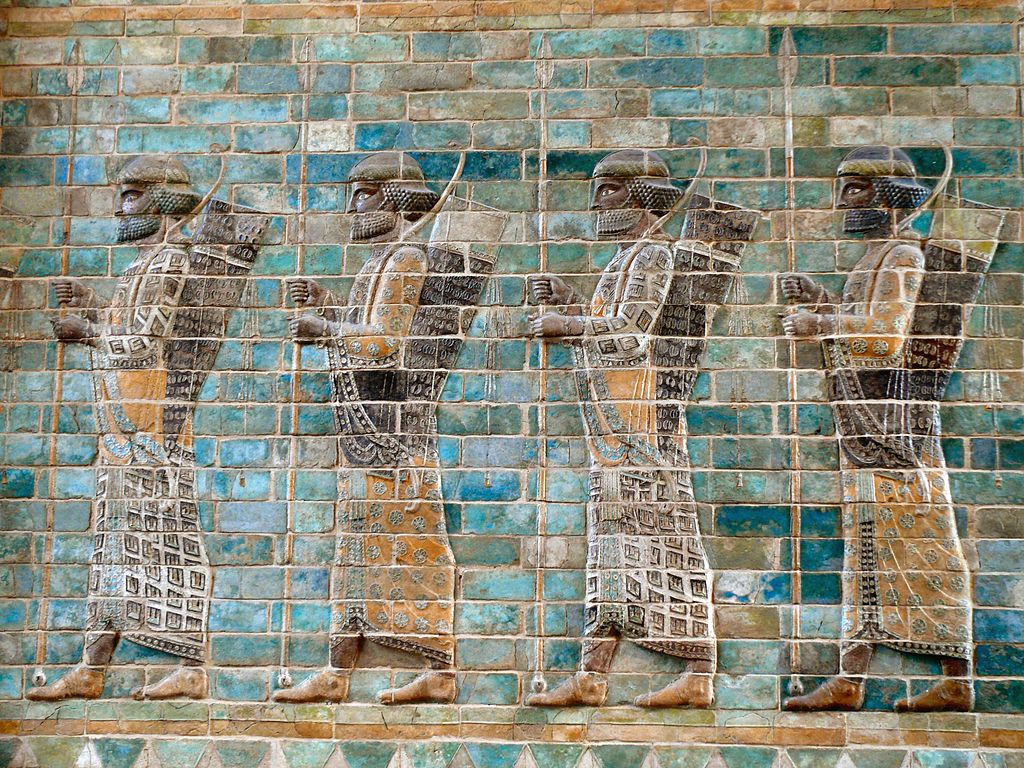
This innovative technique swiftly found its way into the opulent palaces of the Achaemenid kings, with one of the finest examples adorning the palace of Darius I at Susa. These exquisite reliefs, adorned with vibrant hues and intricate detailing, served not only as decorative elements but also as powerful symbols of royal grandeur and imperial authority. Through their skillful use of color and meticulous craftsmanship, the Achaemenid artists transformed stone into a medium of unparalleled beauty, immortalizing the splendor of their empire for generations to come.
Sculpture
Among the most distinctive features of Achaemenid sculpture are the intricately carved slabs in low relief adorning the stairways and hallways of the ceremonial edifices within the Achaemenid palace complexes.

These masterfully crafted reliefs serve as captivating narratives, depicting scenes of royal processions, ceremonial rituals, and symbolic motifs. Through meticulous attention to detail and skilled craftsmanship, Achaemenid artists transformed the stone surfaces into dynamic compositions that conveyed the power, prestige, and splendor of the Persian Empire. These reliefs not only served decorative purposes but also communicated ideological messages, reinforcing the authority of the Achaemenid kings and glorifying their achievements. Reflecting the synthesis of diverse cultural influences, Achaemenid sculpture stands as a testament to the artistic ingenuity and cultural richness of the Persian civilization.



2. Bas-relief of proskynesis to the Persian king, Apadana, Persepolis. (c) Marco Prins
3. Bas-relief of Farvahar, Persepolis. (c) slingshot
The Achaemenids employed these remarkable reliefs not only to adorn their palatial structures but also to embellish their tombs at the prestigious royal necropolis of Naqsh-e Rostam, located approximately 12 kilometers north of Persepolis. Carved into the rugged cliffs, these monumental rock-cut tombs served as the final resting places for Achaemenid kings and nobles, including Darius the Great and Xerxes I. The reliefs adorning these sepulchers depict regal figures in ceremonial attire, accompanied by divine symbols and accompanying inscriptions, conveying the divine mandate and eternal legacy of the Achaemenid rulers. Through their strategic placement and artistic execution, these reliefs at Naqsh-e Rostam serve as enduring testaments to the grandeur and majesty of the Persian Empire, immortalizing the achievements and aspirations of its illustrious rulers for posterity.

The Persian Column
The Persian columns, a hallmark of Achaemenid architecture dating back to c. 500 BC, represent a remarkable fusion of diverse influences and artistic traditions.

Despite their limited experience with stone architecture, the Achaemenids demonstrated remarkable ingenuity by drawing upon the expertise of artisans and craftsmen from across their vast empire. This collaborative effort resulted in the development of a distinctive imperial style that seamlessly integrated elements from Mesopotamia, Egypt, Lydia, and Elam, among other regions. The Persian columns, characterized by their impressive scale and elegant proportions, served as iconic symbols of the empire’s power and grandeur, leaving an indelible mark on the architectural landscape of antiquity.
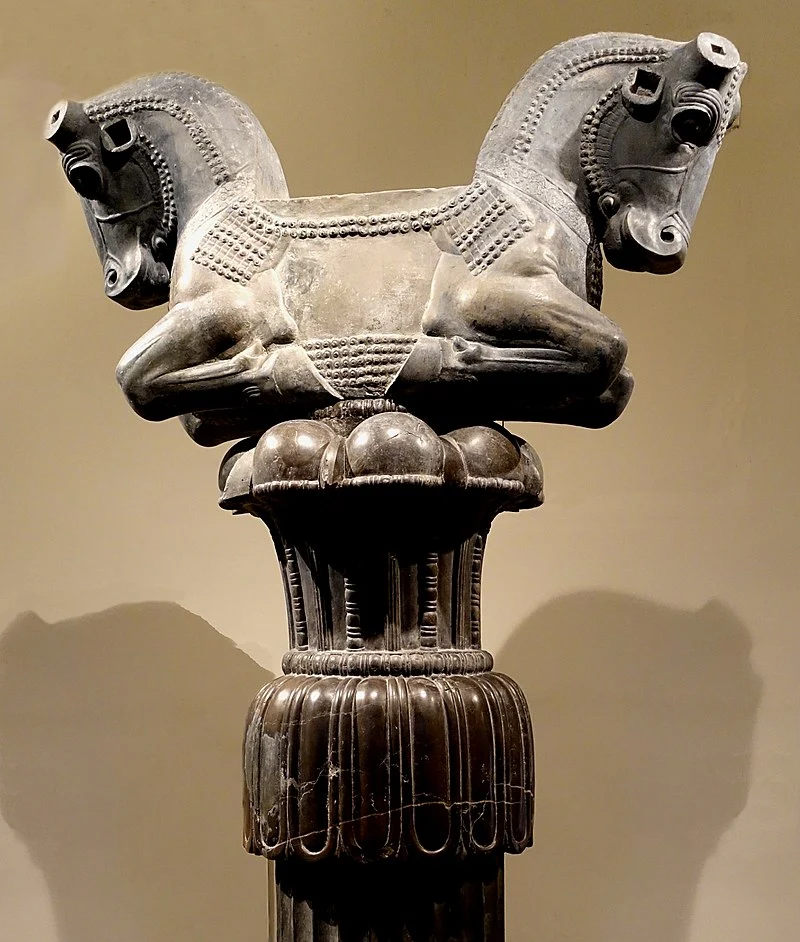
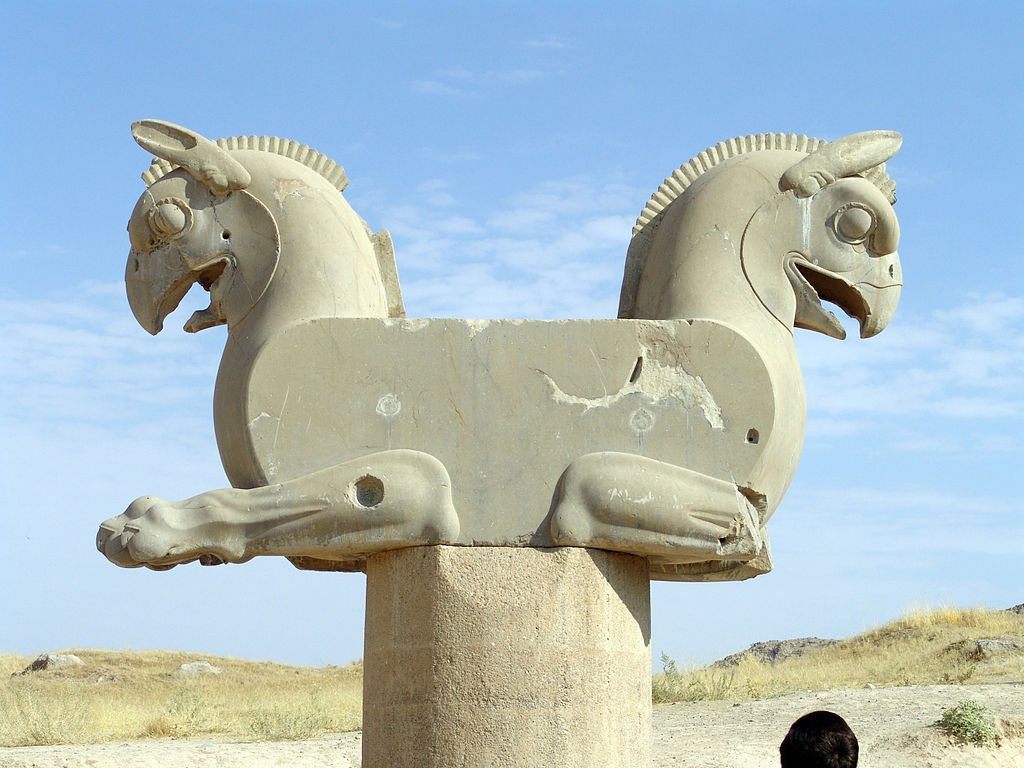
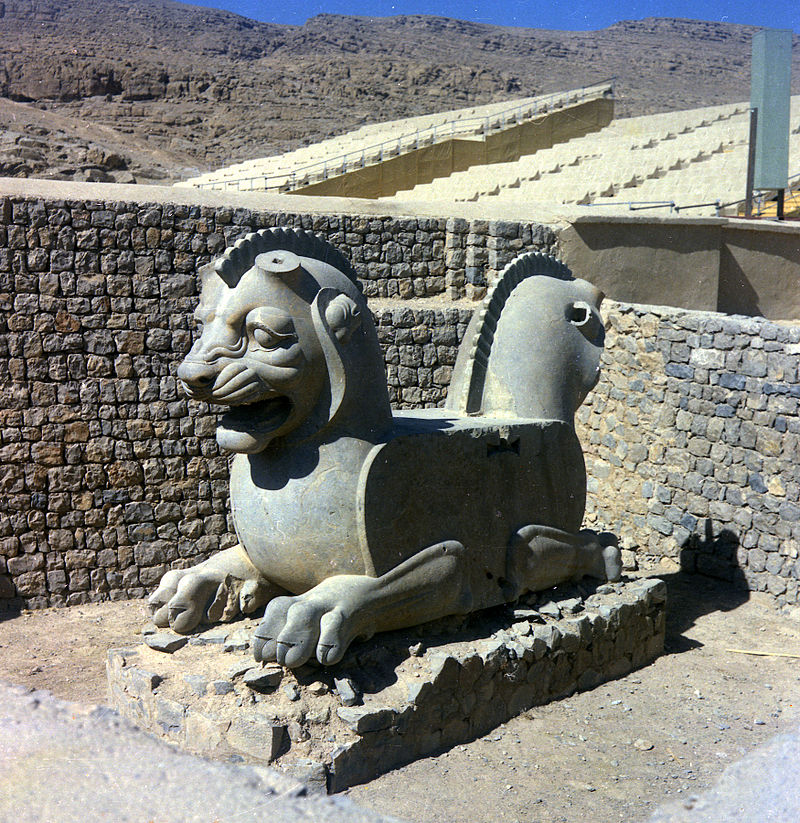
Metalwork
The Achaemenids, known for their innovative artistic endeavors, assimilated various techniques from neighboring cultures, including the intricate metalworking of gold, likely influenced by the Medes. Among the most prominent artifacts showcasing this refined craftsmanship are the ceremonial drinking cups known as rhyta, crafted meticulously from precious metals like gold and silver. These exquisite vessels not only exemplify the Achaemenid’s mastery of metallurgy but also serve as tangible symbols of their opulence and cultural sophistication. Through the creation of such magnificent objects, the Achaemenids elevated their status as patrons of the arts and solidified their legacy as one of the most influential civilizations of the ancient world.

One of the most celebrated legacies of Achaemenid craftsmanship is the Oxus Treasure, a remarkable collection comprising 180 pieces of exquisitely crafted reliefs, figurines, jewelry, and coins crafted from precious metals like gold and silver.

This treasure holds immense significance as it provides a captivating glimpse into the diverse forms and intricate techniques employed in metalworking during the early years of the Achaemenid Persian Empire. From intricately designed jewelry to meticulously detailed figurines, the Oxus Treasure serves as a testament to the unparalleled artistry and skill of the Achaemenid artisans, showcasing their ability to transform precious metals into objects of unparalleled beauty and cultural significance. As a symbol of wealth, power, and artistic sophistication, the Oxus Treasure remains an enduring testament to the rich cultural heritage of the Achaemenid Empire and its enduring legacy in the annals of history.


